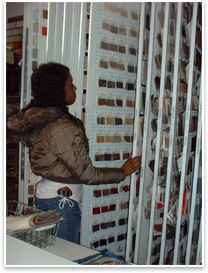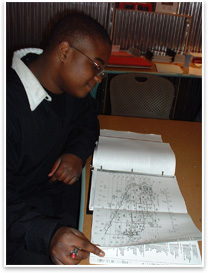
| San Francisco Architectural Foundation Makes Big Waves from Small Steps
How do you . . . give high-school students meaningful exposure to the profession of architecture? Summary: The Architectural Foundation of San Francisco (AFSF) partnered with the San Francisco Unified School District (SFUSD) in 2004 to create the Build San Francisco Institute, a design-based experiential learning program for high school juniors and seniors. A half-day program that offers accredited high school courses, the Build San Francisco Institute integrates academic subject matter with the study of a local major urban construction project currently under development.
The following summer, AFSF modified the program to have all students interested in learning about architecture report to one firm. There, the students were connected to each other, but also to one project currently in progress and to the whole design and construction team. During the six-week course, students successfully gained perspective on the process of creating the physical environment. “That was the breakthrough,” says Sandler, “and the beginning of what ultimately evolved into a continuing relationship with the SFUSD.” Eight years ago, the school system asked the foundation to do more with the course, so they developed an after-school program that met during the academic year. Then, three years ago and again at the request of the school system, AFSF and SFUSD jointly developed the Build San Francisco Institute, which takes students five days a week from schools around the city.
The goal of the program is not to create architects and engineers, explains Sandler: “A number of kids are in the program because it’s of interest to them. We have one who’s gone into film school this semester. One of the girls wants to be a sociologist. The kids get a good education in the process of design and how things fit together. Sure, some of them go on to be architects, but we offer a whole spectrum of possibilities.”
The morning session was created to help students having difficulty passing the state exit exam. According to Sandler, if the students fail to pass the exam, they cannot graduate and effectively end their school careers. The program combines the strengths of a project-based academic program with career awareness and training, and the students improve their skills in communication, problem solving, critical thinking, and interpersonal relationships. Perhaps most significantly, students begin to see the link between their studies in the classroom and their future role in the professional world. |
||
Copyright 2007 The American Institute of Architects. All rights reserved. Home Page |
||
news headlines
practice
business
design

 The Build San Francisco Institute was originally conceived as a summer internship that paired interested high school students with local architecture firms. According to AFSF Executive Director Alan Sandler, the experience was a complete bust for architects and students alike. “Frankly, it was a pretty frustrating experience because the high school students could not be very productive in the office, and there are only so many pencils you can sharpen and papers you can file,” he says. “Bottom line, it was not a very productive experience.”
The Build San Francisco Institute was originally conceived as a summer internship that paired interested high school students with local architecture firms. According to AFSF Executive Director Alan Sandler, the experience was a complete bust for architects and students alike. “Frankly, it was a pretty frustrating experience because the high school students could not be very productive in the office, and there are only so many pencils you can sharpen and papers you can file,” he says. “Bottom line, it was not a very productive experience.” Connecting to the real world
Connecting to the real world Connecting to the community
Connecting to the community